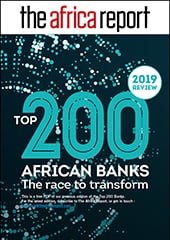A Kenyan flag flies on the FlipFlopi boat, beneath it, is a solar panel fitted on the boat’s roof during the lake Victoria expedition – James Wakibia / SOPA Images In Kenya, the commercial and industrial solar market is the fastest-growing solar segment today, but the Kenya Power and Light Company (KPLC) is under public fire for its inefficiency Drivers of Kenya’s growing C&I solar market
The commercial and industrial (C&I) solar market has taken off across Sub Saharan Africa over the past five years. In Kenya, it is the fastest-growing solar segment today, with roughly 50 MWp installed by end of 2020.
In addition to a myriad of technical and operational inefficiencies, Kenya Power and Light Company (KPLC) has come under public fire for poor governance, gross financial mismanagement, and excessive issuance of power purchase agreements (PPAs).
The cost of idle capacity sitting under take-or-pay contracts passes through to customers as high tariffs, driving customers toward C&I solar for cost savings. East Africa Breweries Limited is the latest in a list of big power consumers, including Mombasa International Airport and Africa Logistics Properties, to announce its shift to solar, and large commercial electricity consumption from the main grid has been waning since May.
Private sector solar companies have aggressively grown consumer awareness, plus financing avenues from DFIs, investors, and local banks have become more readily available. The Cooperative Bank of Kenya, for instance, has recently announced a new loan facility to support SMEs shifting to solar. As such, a competitive C&I solar market has emerged, virtually unsubsidised, and without direct incentivisation. These trends in Kenya signal a future of shifts to C&I solar to come across East Africa. The Kenya Power response
Given KPLC’s staggering debt bill standing at KSh118.73bn last June, the utility is now scrambling to increase revenues and reduce expenditures.
KPLC’s few commercial and industrial customers account for over half of its consumption and revenues, so there is a perceived incentive toward policies that deter grid defection.
For instance, Kenya’s anticipated net metering programme is only available to small capacity plants leaving many self-generators ineligible. Likewise, a Feed-In-Tariff is now available at 120 KSh/kWh, but is only available to plants larger than 500kW, again disqualifying many self-generators. In effect, such policies hinder C&I solar, with implications for slowing energy access and clean energy expansion. What happens in Kenya from this point could set precedent for a […]
